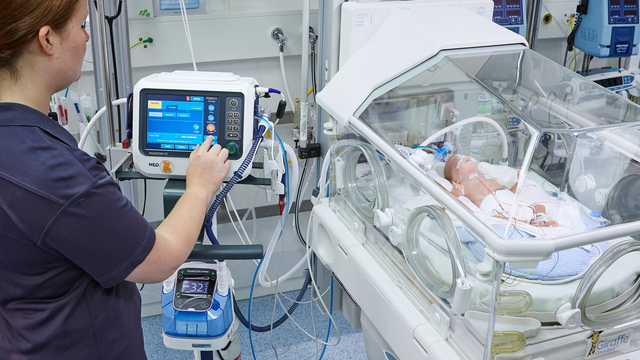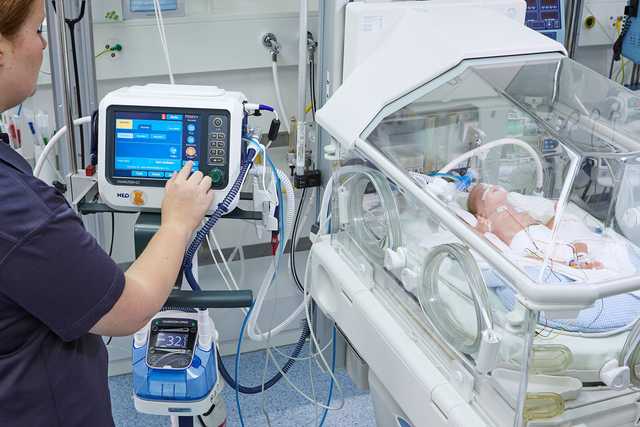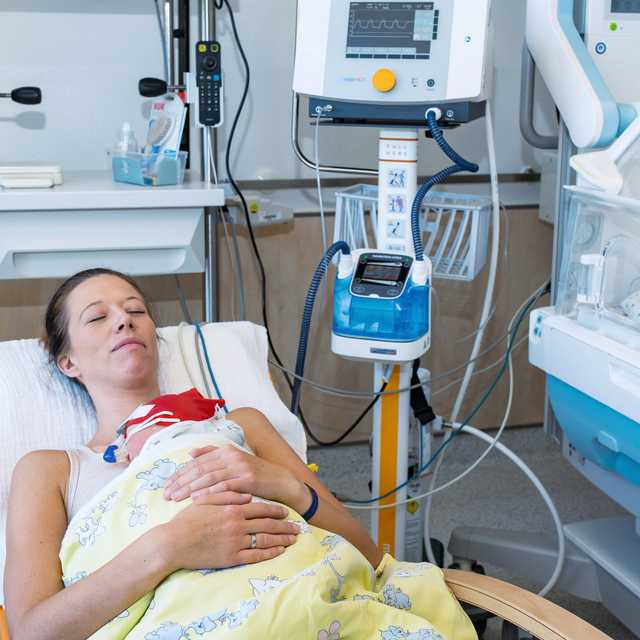

Unter Atemgasaufbereitung versteht man die Erwärmung und Befeuchtung der eingeatmeten Luft oder des verabreichten Atemgases. Dies kann entweder aktiv mit einem Befeuchter oder passiv mit einem HME-Filter (Wärme- und Feuchtigkeitstauscher) geschehen.
Da das Atemsystem von Früh- und Neugeborenen häufig noch nicht voll entwickelt oder zumindest sehr empfindlich ist, werden bei kleinen Patienten vorzugsweise aktive Befeuchtungssysteme eingesetzt.
Verringerung der Atemwegs-Resistance
Verbesserung der Lungen-Compliance
Infektionsprophylaxe
Energieeinsparung für den Körper des kleinen Patienten
Feuchtigkeit ist eine wichtige Komponente des Atemsystems. Sie bildet die Grundlage für das mukoziliäre Transportsystem der Lunge, das Verunreinigungen aus den Atemwegen beseitigt.
Bei der Inspiration wird die Luft im Nasen-Rachen-Raum und in der Luftröhre erwärmt und befeuchtet. Wenn sie die Bronchien erreicht, ist sie mit Wasserdampf angereichert.

Medizinisches Gas ist kalt und trocken und wirkt sich schon nach kurzer Zeit deutlich negativ auf die Lungenfunktion und die Schleimhäute aus. Es stört die natürliche Temperatur- und Feuchtigkeitsverteilung und schränkt die wertvolle Arbeit des mukoziliären Systems ein. Der Einfluss von Beatmungsschläuchen und die Verabreichung hoher Beatmungsflows muss zusätzlich von den Schleimhäuten in den Atemwegen kompensiert werden.
Erwärmtes und befeuchtetes Atemgas hingegen erhält die Viskosität des Schleims. Dadurch wird die Zilienbeweglichkeit (Cilia/Flimmerhärchen = sehr feine Härchen auf den Schleimhautzellen) aufrechterhalten.